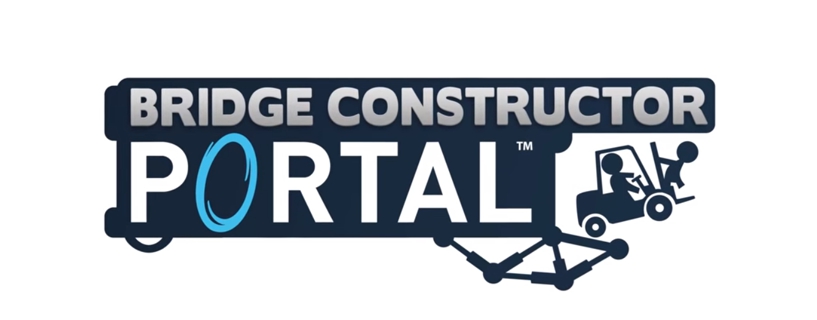Welcome to the Aperture Science Indie Video Game Enrichment Center.
Type: Single-player
Genre: Simulation, Strategy
Developer: ClockStone
Publisher: Headup Games
Release Date: 20 Dec, 2017


Introduction
Before we start, however, keep in mind that although fun and learning are the primary goals of all enrichment center activities, serious injuries may occur if you don’t use extreme scientific thought and scientific caution. Here we use highly scientific methods involving [illegible text] and science. It’s very scientific. Just the other day I was contemplating just how scientific it really is, that is how scientific it is with all the science and science accessories. Look at me: still talking when there’s science to do!
I’ve been busy doing science. It’s been tons of fun so far, everything clean, nothing on fire, all by myself… finally. As a fan of the Portal series, I usually jump at the opportunity to play anything with the Portal theme, from Lego to Tower Defenses and Pinball, there is nothing Portal I won’t try. Today we are mixing two things I have always enjoyed, Portal and physics-based puzzle games. Before Portal, I played a game called the Incredible Machine; I even have my framed “Contraptology” Doctorate on my wall and in my resume. Rather than building crazy machines, in Bridge Constructor: Portal you, not at all surprisingly, construct bridges. If you are familiar with the Bridge Constructor series you will know what to expect here, if you are not, then hopefully you will have a better idea once you have made it to the end of this feature.
Gameplay Video
About the Game
Using a limited set of tools, your task is to get your vehicle or fleet of vehicles (challenge after completion of a level) to the exit. That sounds simple enough, but you are faced with a number of obstacles. The first and foremost is physics itself. You need to figure out a way to design a bridge that can survive at least long enough for your vehicle(s) to reach their destination. On paper that seems straightforward, however, things such as weight and material stress really play an important role here. You can build a simple bridge spanning the gap and that may be enough for the single vehicle to drive across, or it might break before the vehicle even sets a tire on it. The reason for that is simple; gravity loves nothing more than to rip apart an unsupported bridge and send it flying into the blackened maw of a yawning chasm far below. This is where the first constructive challenge comes into play. You begin by analyzing the level to figure out how you can best support your bridge so it will stand up under light to heavy use. There is a handy construction tips section which will give you a crash course in civil engineering. Once you have the basics, it is up to you to apply them. It is important to remember, you must follow Aperture Science testing rules as well. Equipment is expensive to replace, testing subjects are not, so only the vehicle has to survive the trip. Keep that in mind when building your bridges. To help make it more scientific, and because they do what they must because they can, familiar Portal elements are mixed into the Bridge Constructor framework. Material Emancipation Grills, Turrets, Weighted Companion Cubes, Deadly Lasers, Propulsion Gel, Aerial Faith Plates, High Energy Pellets, Fifteen Hundred Megawatt Aperture Science Heavy Duty Super-Colliding Super Buttons, Toxic Acid Goo, GLaDOS herself and, of course, Portals make an appearance. The Portal elements really help to make the game more interesting. I have played previous Bridge Constructor games, and while I enjoyed them, admittedly I never did manage to finish one until now. I actually delayed posting this just so I could finish the game to ensure I could comment on as much of it as possible.
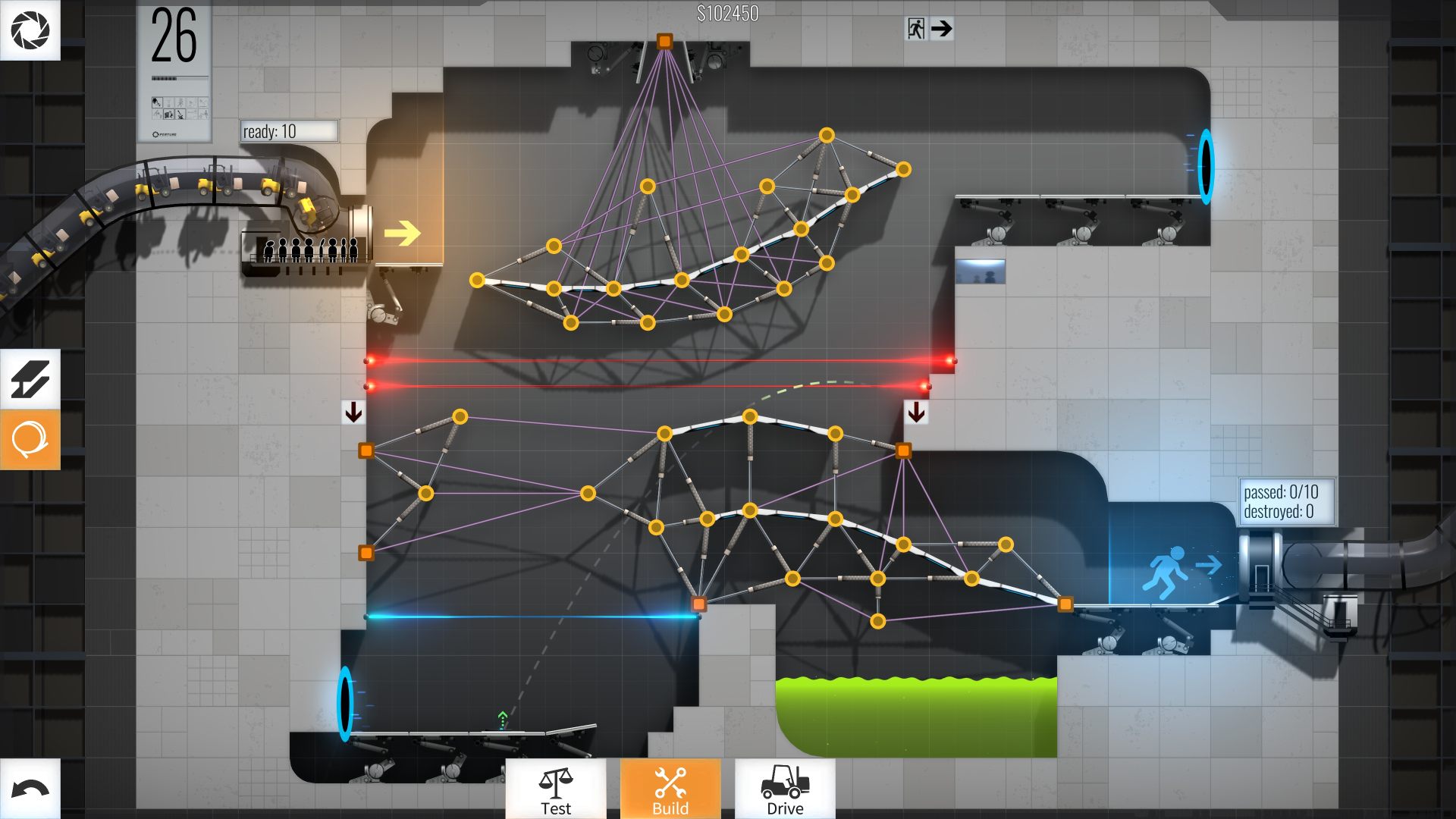
For those of you completely new to the series, perhaps Portal fans looking for anything Portaly, let’s run over the basics. In Bridge Constructor you are given basically three things to work with. Pre-set mounting points where you can anchor your bridges to, in some way, ridged structural pieces that can double as a driving surface and slightly stretchable tension wires to offer additional support. The structural pieces have a maximum length so you typically can’t just use one to make a bridge. They must be joined. Each time there is a junction it weakens your bridge due to flex that can occur at the joint. To fix that, you can add braces that help redistribute the load and offer additional rigidity to the bridge. You also use tension wires to support the bridge from above as well to take some of the load off. That’s the simple basics, of course, it is never quite that easy once you leave the tutorial area. To make things more Portal like, portals are often used to help get your vehicles around. You can’t place them yourself so you need to work around where they are placed. Some levels will have multiple portals in them, thankfully these portals are color coordinated so you know where the portal will exit. The same physics as in Portal apply, speed and angle in equals speed and angle out, so if you have your vehicle leisurely drive through the portal it will continue to drive slowly on the other side. Alternatively, if you have the vehicle pass through quickly and the exit portal is angled, you will launch the vehicle through the air towards its destination. Other familiar Portal elements also come in to play to make the game more challenging and interesting. The gameplay basically comes down to you planning a route from the start of the level through to the end without obvious or easily accessed routes available to you. As an example, one level had you suspending an entire bridge structure using tension cables from a single mounting point in the ceiling. Oh, there were also deadly lasers as well located directly under the area to prevent you from cheating by building supports leading down to the other mounting points in the level. GLaDOS thinks of everything! This means the bridge needs to be constructed in such a way that it doesn’t collapse under its own weight and doesn’t flex/fold in on itself before the vehicle has a chance to drive across it. It was quite challenging but was quite exciting at the same time.
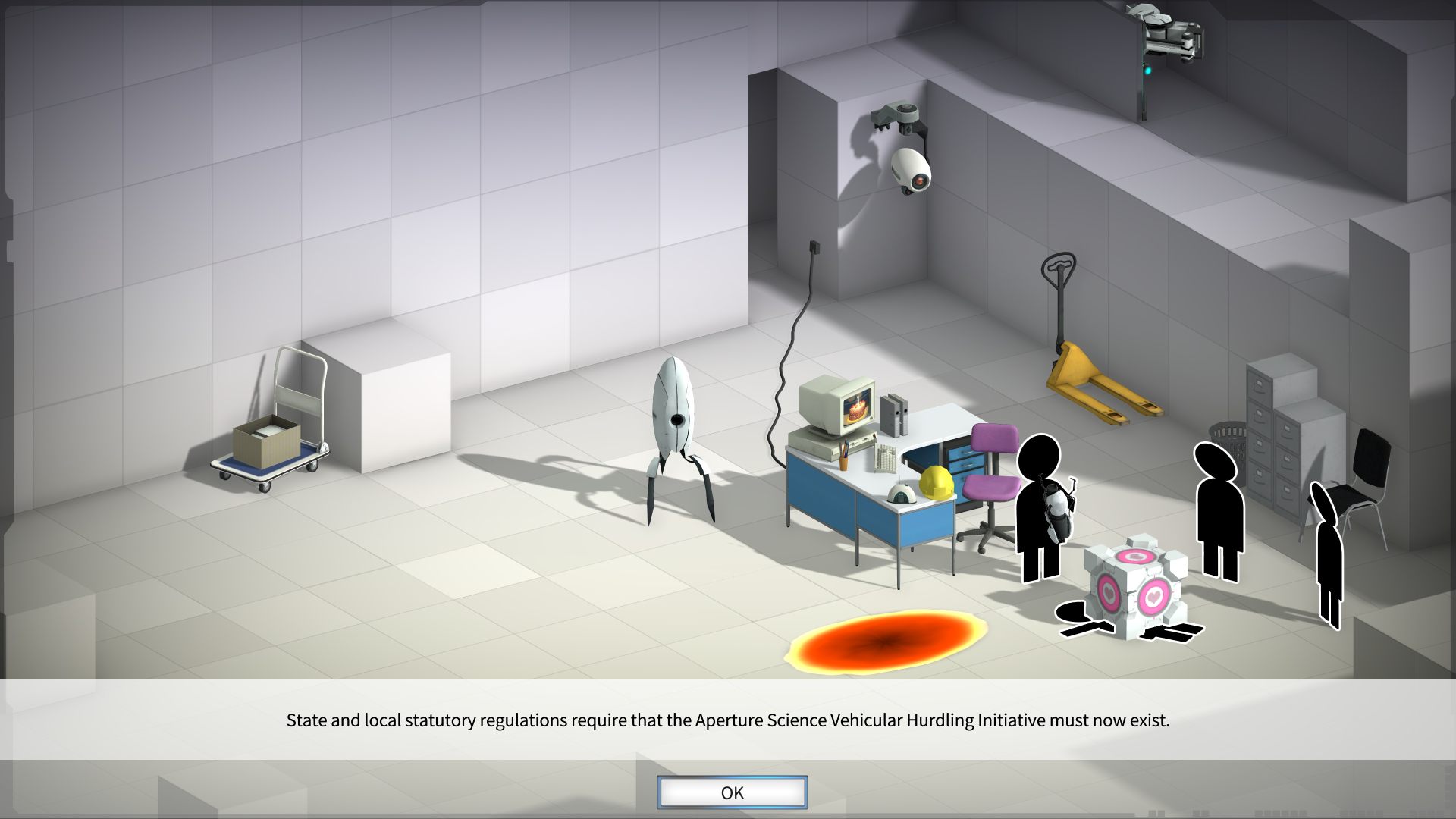
Let’s talk about why I usually have difficulty finishing a Bridge Constructor game despite enjoying it. I don’t mean for this to sting: I forgive you everything (you monster). It comes down to one simple thing. I tend to either over or under analyze the complexity of the level. This is due to both the way I think (which is confusing even to me sometimes) and the way the game is designed. The physics behind why the game is designed that way makes a lot of sense. If it was a real bridge you were building, you don’t exactly have that wide of a margin for error in your calculations and constructions. In application though, you could have solved the puzzle just to have the entire thing fly apart on you just because you had one supporting brace one pixel out of the ideal spot for it. Honestly, many times when I see no reason for why my masterpiece is failing, it comes down to simply making a slight adjustment to where a junction point is. I’m not even talking about a massive relocation either, this is a matter of pixels. No new braces or supports added either. Oh, how we laughed and laughed, except I wasn’t laughing under the circumstances I’ve been shockingly nice. Thankfully the game does make it easier for you by changing the colors of the pieces as they take stress. This allows you to pinpoint the weak areas and either add more supports or adjust the existing supports to mitigate the load on that one point. The problem then is me having to choose from wiggling all my joints to see if I can salvage my bridge or trying to redesign the bridge to avoid that issue. Redesigns usually lead to me making monstrosities of bridges that are far too complex to be a proper solution but in the end last long enough before flying apart for the last of the fleet vehicles to make it to the destination, generally without their driver. Not like Human life is important, isn’t that right GLaDOS.
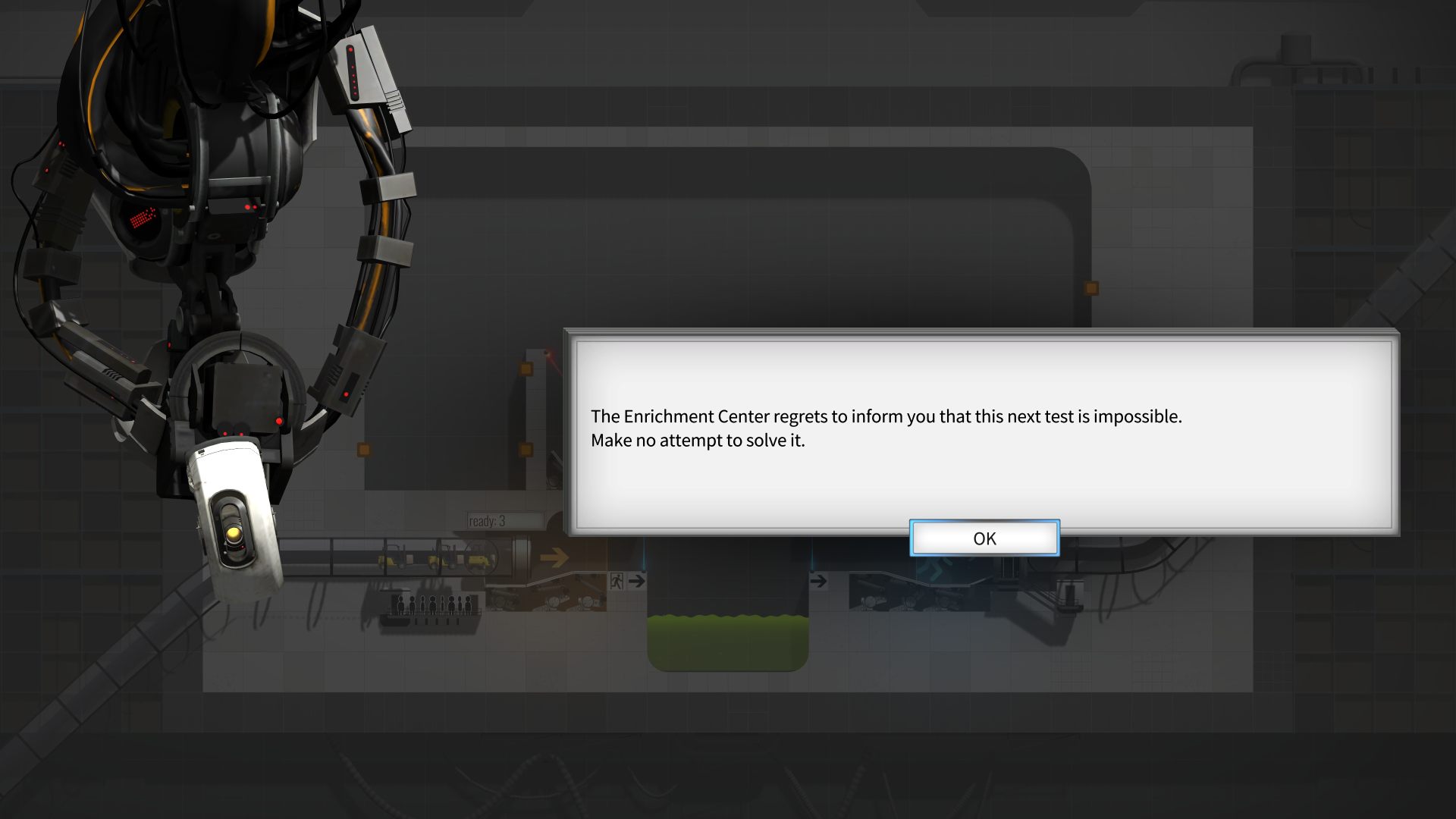
GLaDOS was the driving force between me striving to finish the game (besides the whole, I always try to finish the game before writing about it). GLaDOS sadly wasn’t really in the game much. I mean sure she isn’t in Portal that much either, so that is fine. Some levels she didn’t even grace me with her presence, which was a little disappointing. She was mainly there to help you through the game by, in her own unique way, explaining elements of the level. She had a few of her cold natured jokes mixed in for good measure, but she was pretty much down to business.
Graphically the game is simple and there isn’t a lot going on visually. It’s a faithful reproduction of the white panel and grey color schemed Aperture Science lab feel in a flattened 2D world. It does a good job of giving the feeling that you are actually in a testing facility. This is due to the presence of pretty much all of GLaDOS’s favorite tricks. The game would fit right in on a smartphone with its simplistic interface and there is a good reason for that, the game was designed to be played on smartphones as well as the PC. Does that mean it should have stayed there? Absolutely not! I would much rather play this style of game with a mouse rather than directly with my fingertips. Having played some 2D puzzle games that went 3D, I have experienced that a third dimension hurt the gameplay far more than it added to it. I liked that I didn’t have to deal with the depth of the field due to the challenge I was already experiencing with just height and width.
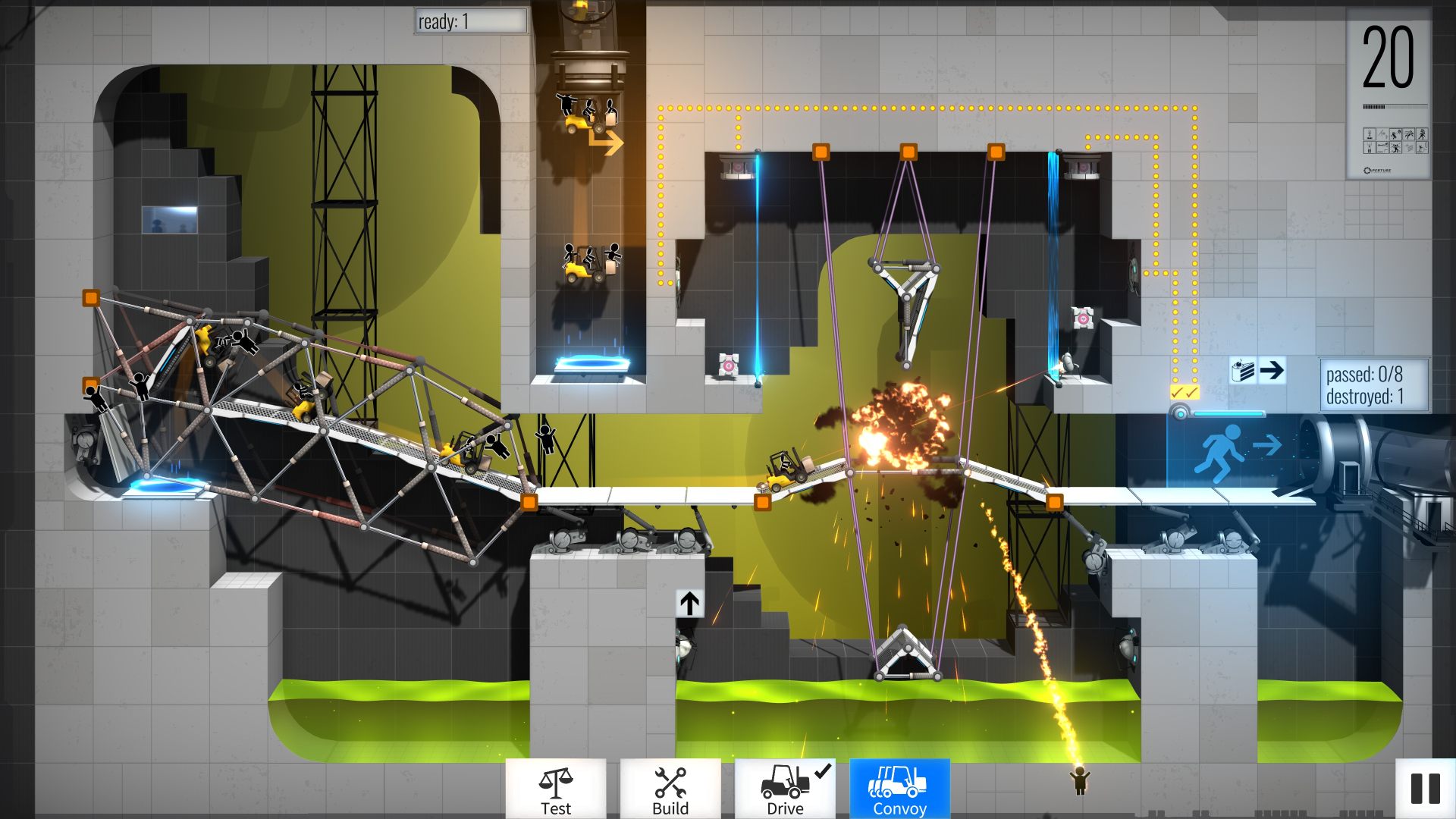
The sound was minimalist as well. When something went bad you heard about it, such as when a vehicle exploded or plunged into toxic goo. There were also sounds when the turrets noticed you, Those ranged between their deceptively sweet and charming comments to the sound of their guns firing at you. I’m not sure if it was a bug for me or if I messed up the settings somehow, but the background music only seemed to play when in the menus rather than when in game. GLaDOS was back in a fairly true to form way, although she seemed far too eager to be helpful rather than trying to get you killed by her diabolical traps. Having GLaDOS there, voiced again by Ellen McLain, very much contributed to the Portaliness feeling of the game.
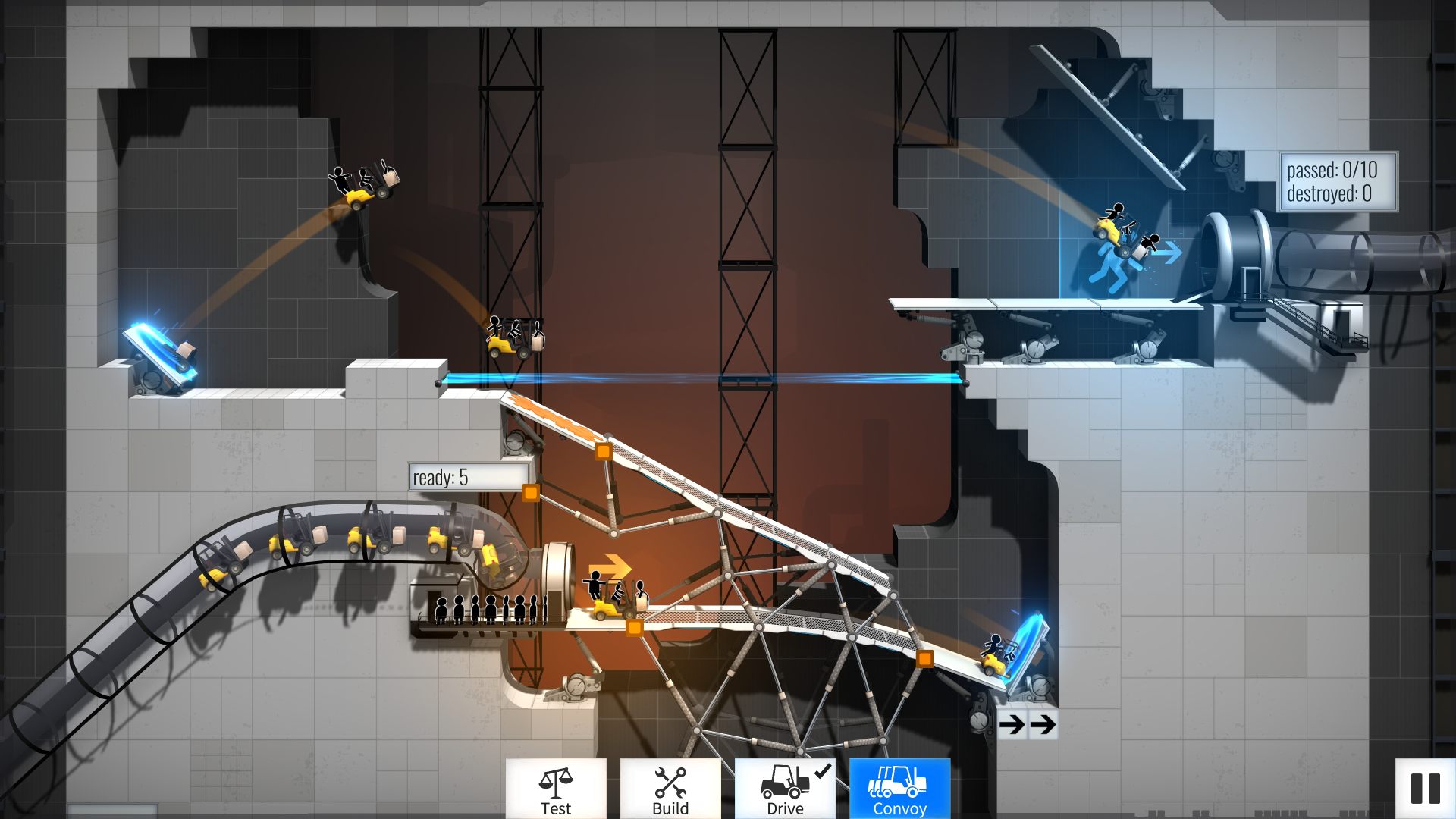
The controls worked quite well. Various gestures are used to interact with the components of the game. There are two buttons on the side so you can choose between solid structural pieces or cables. Once you laid a structural piece, clicking on it would turn it into a road surface. Attaching another piece to it would automatically set the new piece as a road surface too. Should you not want that piece to be a road, clicking on it will turn it back into a support structure instead. Clicking and holding on the joint between any structural component will allow you to move that entire piece of structure within the limits of the parts, any parts that become overextended turn red and will be automatically deleted once you release the mouse unless you adjust the joints position to allow that piece to stay attached. Double-clicking on a piece will remove it, double-clicking on a joint will remove everything directly connected to that joint. Basically, it is quite easy to manipulate the playing field once you have familiarized yourself with the controls. All in all, I rarely had any difficulties in interacting with the game.
Verdict
Well, here we are again. It’s always such a pleasure, so should you consider picking up Bridge Constructor: Portal? If you are a fan of the previous Bridge Constructor games, then there is no reason not to. It’s more of the fun bridge building elements from the previous games with a whole new environment to challenge your skills. If you are a fan of the Portal series and are looking to flex your brain’s puzzler muscle alongside your favorite AI, then you should enjoy the game. It isn’t truly the next official Portal game but it isn’t trying to be. It takes all the fun of a day in Aperture Science and places you into a set of bridge building testing chambers rather than more pure environmental puzzles akin to the main Portal series. The game makes for an excellent starting point in the Bridge Constructor series as well if you have never had the chance to experience any of the previous games. I’m making a note here: Huge success! It’s hard to overstate my satisfaction.

